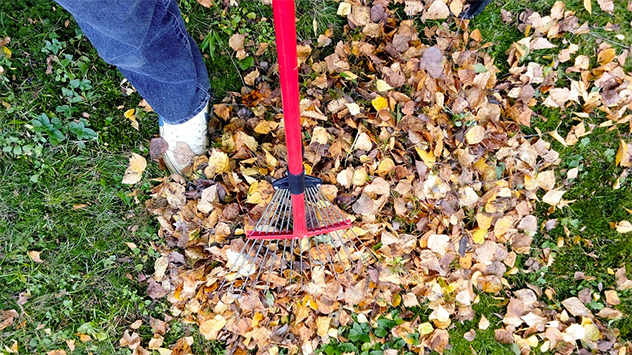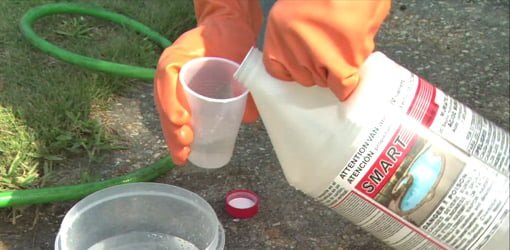If you’re seeing black mold on your deck, don’t ignore it. This toxic fungus isn’t just ugly — it can slowly destroy your decking and pose serious health risks to your family. Whether your deck is made of wood, composite, or PVC, mold thrives in damp, shaded areas with poor airflow. Left untreated, it can lead to rot, stains, and even structural damage.
The good news? With the right tools and techniques, you can safely remove black mold from your deck — and keep it from coming back. In this guide, I’ll walk you through how to clean mold off wood, composite, and painted decks, plus how to treat mold under your deck and prevent it in the future.
What Is Black Mold?
Black mold, or Stachybotrys chartarum, is a toxic fungus that thrives in dark, damp environments. It’s usually dark green or black in color and often carries a strong musty odor. Mold spreads quickly on organic materials like wood, drywall, or paper — and your deck is no exception, especially if it stays shaded or wet.
Is Black Mold Dangerous?
Yes. Black mold releases spores that can trigger respiratory issues, skin irritation, and allergic reactions — especially in kids, seniors, and people with weakened immune systems. Prolonged exposure may lead to more serious symptoms like asthma attacks, headaches, or even lung infections.
Why Is Black Mold Forming On Your Deck?
Black mold forms on decks for three main reasons:
- Poor drainage: Standing water or poor runoff traps moisture, giving mold the perfect breeding ground.
- Lack of sunlight: Shaded decks dry slowly, allowing mold to settle and spread.
- High humidity: Moist air and poor ventilation under the deck create constant dampness.
Wood, composite, and even metal decks can all be affected.
Can Black Mold Damage Your Deck?
Absolutely. On wood decks, mold causes stains, fading, warping, and eventually rot. On composite or metal decks, it can lead to surface damage, corrosion, and peeling finishes. Catching and removing mold early prevents costly repairs.
How To Clean Black Mold Off Your Wood Deck
Use these methods to safely remove black mold from your wood deck.
Wear protective gear
Use gloves, goggles, and an N95 mask. Mold spores are airborne and shouldn’t be inhaled.
Clear the area
Vacuum or sweep to remove debris and loose spores. If you use a HEPA vacuum, empty it outside immediately.
Scrub the surface
Mix water with dish soap, vinegar, or a deck-safe cleaner. Scrub the moldy area with a soft-bristled brush. Rinse thoroughly.
Use vinegar for deep treatment
Spray white vinegar directly on mold spots and let it soak for an hour. Then wipe with a damp cloth.
Sand and seal
If stains remain, sand lightly with fine-grit sandpaper. Then seal or stain the deck to protect it from future mold.
How Can You Remove Mold From Painted or Stained Wood?
Be gentle to avoid damaging the finish:
- Scrub lightly, rinse well, and dry completely.
- Use mild soap or vinegar solution.
- Avoid bleach or pressure washing — it can strip the paint or stain.
How Can You Remove Mold From Composite Decking?
Composite decks can be damaged by harsh chemicals. Use this method:
- Scrub with a soft brush and rinse thoroughly.
- Rinse with a hose or power washer (low pressure).
- Apply a vinegar solution and sprinkle baking soda.
- Let sit 15–20 minutes.
How Can You Remove Black Mold Under Your Deck?
- Use a garden sprayer with a mold-killing solution (vinegar or a mold cleaner).
- Scrub the underside of the deck and rinse well.
- Improve ventilation and drainage under the deck to prevent regrowth.
How Can You Prevent Black Mold on Your Deck?
Keeping your deck mold-free can be done with conducting regular maintenance like:
- Sweep regularly to remove leaves, pollen, and debris.
- Keep the deck dry — mop up puddles and check for leaks or poor drainage.
- Let in sunlight — move planters or furniture to avoid shaded, damp spots.
- Seal or stain your deck every 2–5 years.
- Add ventilation if your deck is low to the ground to help moisture escape.
- Clean gutters and redirect water away from the deck area.
Final Thoughts
Black mold on your deck is a problem you can’t afford to ignore. The longer it stays, the more damage it does — both to your deck and potentially your health. Fortunately, with the right cleaning methods and a little maintenance, you can get rid of mold and keep it from coming back.
If the mold is extensive or keeps coming back despite your efforts, it may be time to call in a professional for a deeper inspection and treatment. But for most homeowners, a weekend, a scrub brush, and some vinegar can go a long way toward restoring your deck — and your peace of mind.









